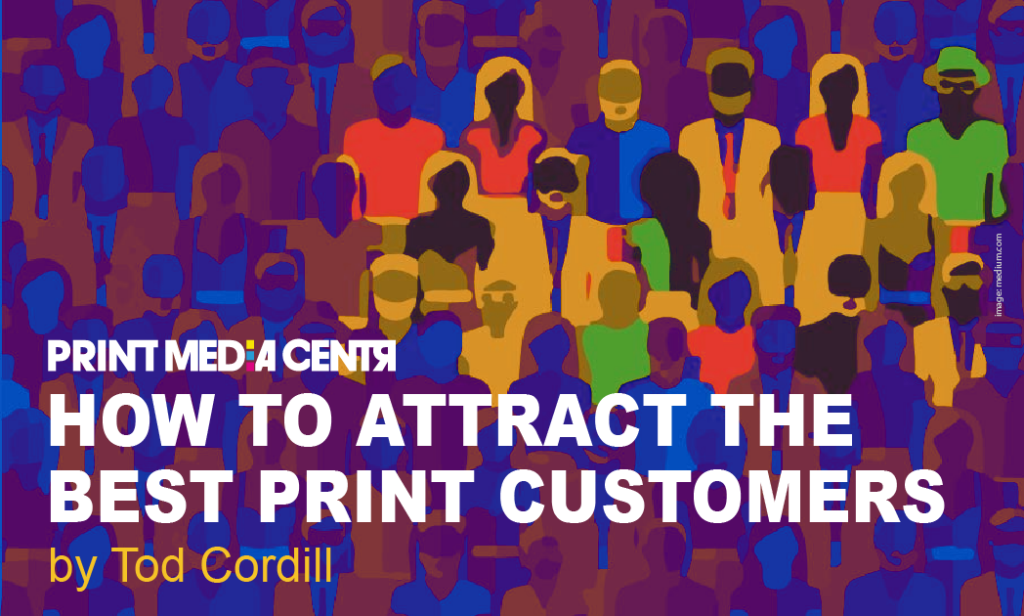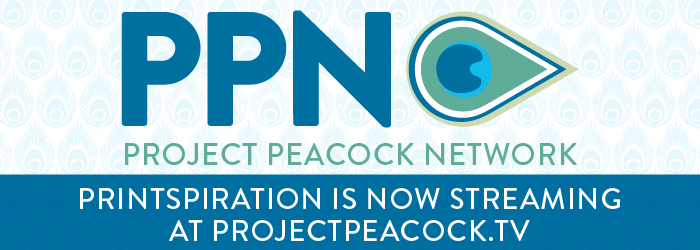
“Nobody ever asked me what customers I wanted before.” This was told to me by the VP of Sales at a $25 million revenue commercial print business a few years back. Throughout his career, new print customers came in seemingly randomly by referrals, leads from the website and the phone, and hunting sales reps.
So how can you attract those customers you want?
Inbound and Outbound Marketing
Marketing efforts can be categorized as inbound or outbound marketing.
Inbound Marketing
Inbound marketing is a phrase coined by Hubspot about a dozen years ago. Inbound leads are people that fill out a form on your website, send an email they’ve seen on your website, or call a business phone number.
Content marketing enables inbound marketing. A good content program helps your website rank well in Google searches; some people doing these searches will become inbound leads.
They actively came to you, hoping that you could solve their needs. They have a high propensity to buy from you. Inbound leads that are similar to your better print customers are ideal.
Creating content is a marketing investment that can pay off handsomely over time. An effective inbound marketing program can be the most cost-efficient way to generate leads, but it does require persistence over a period of time.
One problem is that you have no control over who these leads are. Some are (hopefully) great, some might be OK but not necessarily print customers you’d go after, and some aren’t a good fit for your company.
Another problem with inbound marketing is that it is a passive “build it and they will come” strategy.
Outbound Marketing
Outbound marketing actively targets customers you believe are a good fit for your services. You get to choose which print customers you go after.
You can use a variety of outbound channels to reach these print customers, including:
- Phone calls
- Cold emails
- Direct mail
- Targeted advertising
While these potential customers might be a fit for your needs, they are likely not actively looking for your services when you reach out. Serendipity does happen, and you stumble upon a current need, but your outbound program shouldn’t rely on this.
The best outbound marketing programs have multiple marketing touches done over time on various marketing channels. It can take seven or more phone calls or emails to get a response, and when you do get a response.
A problem with outbound marketing is that you’re reaching out to people that likely don’t need your services now. They aren’t in buy mode. The best outbound marketing programs continue to nurture prospective customers long-term. The goal is to be top-of-mind when a need does arise.
Inbound and outbound marketing programs are a long game, although outbound marketing is proactive and can have short-term success. An effective outbound program requires you to stay in contact with most leads over time. They need to think of you when they are ready to buy.
Effective outbound marketing programs select companies that are a good fit for your services. You can target hundreds or thousands of companies by industry, size, geography, or other criteria.
Account Based Marketing
Outbound marketing programs typically reach many companies that have some things in common. You can customize your messaging based on the market segments you identify and the job titles of people you’re reaching out to, but the messaging is generalized.
But you can identify a few companies that share characteristics with your very best customers and focus many of your sales and marketing resources on them. Account-based marketing consists of:
- Finding companies that could become one of your top customers
- Research the company and learn its major initiatives and its biggest challenges. You can learn these from press releases, executive interviews in trade magazines and podcasts, gleaning all you can from their website, and reading social media posts and job listings. Public company quarterly earnings calls can be the best source of information for public companies.
- Match the initiative and challenges with your capabilities. Determine how to communicate your abilities in a way that makes you appear unique.
- Identify key decision-makers and influencers. Identify actual people, not job titles, and gather their contact information.
- Select and edit existing content and create new content that addresses the company initiatives and challenges. Tailor the content for each decision-maker.
- Use multiple marketing channels to get your content in front of decision-makers and influencers. Use some combination of advertising, social media following and connecting, and direct mail. Once you have established brand recognition, you can start with direct emails and phone calls.
While strategic sales teams have always targeted accounts and created customized slide decks, account-based marketing is a process you plan on spending months or years to land your new best customers.
While you still can’t directly choose your customers, account-based marketing increases your chance of getting the customers you want.
##
Read last month’s post from Tod: https://printmediacentr.com/increase-search-traffic-using-the-pillar-content-model
See all of Tod’s posts here

Tod Cordill has worked in a variety of industries including software, manufacturing, printing, and eCommerce. He currently helps B2B companies integrate digital marketing channels into existing sales and marketing efforts by combining his P&L perspective with an engineering problem-solving structure. Get in touch and learn how Moderno Strategies can help you efficiently drive business growth. Connect with Tod: @todcordill on Twitter and on LinkedIn












